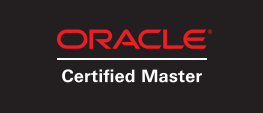In OCM exam they can ask you to do all sort of operations using LOBs. So, be prepared for them. In the docs there are some example PL/SQL blocks that can be used as template. However, read everything and keep in mind: Differences between Empty and Null LOB Inline and Out-of-Line LOB Storage How to …
Category: OCM 11g Preparation
OCM 11g Preparation
Apr 08
OCM 11g Preparation - Implement securefile LOB
Securefile LOBs are a new way of storing LOBs that allows us to enable compression, deduplication, or encryption. In the exam, we need to know how to manage them: Using CREATE TABLE with SecureFiles LOBs Using ALTER TABLE with SecureFiles LOBs Initialization Parameter db_securefile for SecureFiles LOBs PL/SQL Packages for SecureFiles LOBs "Database File System …
Apr 07
OCM 11g Preparation - Maintain indexes on a partitioned table
Now that you know how to manage the partitions, start working with their indexes: Rebuilding Global Index Partitions Rebuild each partition by issuing the ALTER INDEX ... REBUILD PARTITION statement (you can run the rebuilds concurrently). Drop the entire global index and re-create it. This method is more efficient because the table is scanned only …
Apr 06
OCM 11g Preparation - Perform partition maintenance operations
The partition maintanence is as important as knowing create them. Study in this topic all the kinds of partition operations, and be ready to access quickly the documentation to get or adapt codes: Partition operations: Adding / Coalescing / Dropping / Exchanging / Merging / Moving / Renaming / Splitting / Truncating Modifying Default Attributes …
Apr 02
OCM 11g Preparation - Administer partitioned tables and indexes using appropriate methods and keys
Partitioning is the key for performance when you are talking about DW or any object with a lot of rows. What you must study and practice in this topic is how to create a table with: Basic Partitioning Strategies: RANGE, LIST and HASH. Advanced Partitioning Strategies: REFERENCE, INTERVAL, SYSTEM and VIRTUAL COLUMN-BASED. Composite Partitions (all the combinations) …







